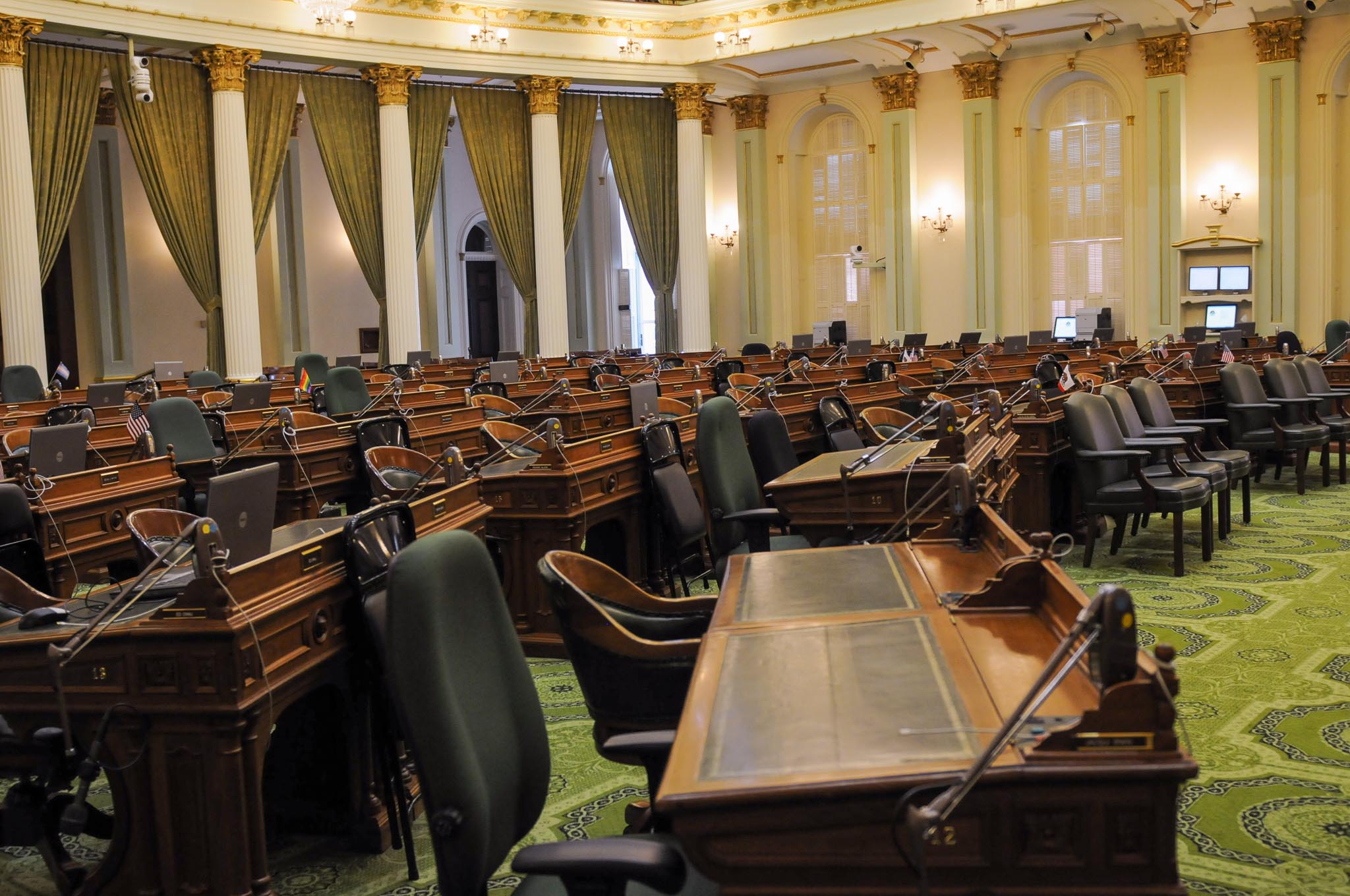
The Legislative Bill Room, California State Capitol. (Photo: ca.gov)
What Is ‘Digesting’?
The Digest is initially prepared by the Deputy Legislative Counsel
By Chris Micheli, October 10, 2023 6:56 am
Have you ever heard the term “digesting” in the California Legislature? This gerund is just one of many responsibilities of the attorneys who work in the California Office of Legislative Counsel (OLC). This gerund comes from the “action” word created to describe the drafting of the Legislative Counsel’s Digest, which must accompany every legislative measure in the California Legislature, whether it is a bill, resolution, or constitutional amendment.
According to the Glossary provided by the Office of Legislative Counsel, the “Digest is prepared by the Legislative Counsel and it summarizes the effect of a proposed bill on current law. It appears on the first page of the printed bill.” Digests are also used for constitutional amendments and all three forms of resolutions.
The Legislative Counsel’s Digest is on the first page of every bill, resolution and constitutional amendment introduced or amended in the California Legislature, appearing right after the measure’s number, the listed author and co-authors, and the “relating clause”. As such, the Digest appears before the actual text of the measure.
The Digest is initially prepared by the Deputy Legislative Counsel who drafted the introduced version of the bill. When the bill is substantially amended, the Deputy drafting the amendments will modify the text of the Digest to reflect the substantive amendments made to the measure.
The following is an example from a bill that reached the Governor’s Desk during the 2023 Legislative Session:
AB 309, Lee. The Social Housing Act.
Existing law establishes the Department of General Services to provide centralized services, including, but not limited to, planning, acquisition, construction and maintenance of state buildings and property. Existing law authorizes the Director of General Services, with the consent of the state agency concerned, to lease state-owned real property when the Director of General Services deems that leasing serves a beneficial public purpose limited to the development of housing.
This bill would enact the Social Housing Act and would create, in the Department of General Services, the Social Housing Program, the mission of which would be to ensure that qualified social housing developments are produced on leased state property to help address the housing crisis, as specified. The bill would authorize the program to identify and develop up to 3 qualified social housing projects, as specified, with the intent to use the results to inform public policy related to developing an independent public entity to develop statewide qualified social housing. The bill would require the program to solicit bids to develop qualified social housing units, and prioritize bids that demonstrate long-term revenue neutrality or a cost rent model, as those terms are defined. The bill would require the program to employ 2 different leasing models, the rental model and the ownership model, as specified, in creating social housing. The bill would prohibit a city or county from denying a social housing development authorized under the program. The bill would authorize a city or county to propose objective design review standards, as specified, and authorize a city or county to propose modifications to mitigate any specific, adverse impacts on public health or safety, as specified.
DIGEST KEY
Vote: majority Appropriation: no Fiscal Committee: yes Local Program: no
The Legislative Counsel’s Digest includes the four “Digest Keys” that always appear at the bottom of the Digest before the Enacting Clause (which is the statement, “The people of the State of California do enact as follows:”).
The first line of the Digest is always the Subject Line. The Subject Line from the above 2023 bill example is: “AB 309, Lee. The Social Housing Act.” It includes the bill number, (the statement either as introduced, or as amended), bill author, and subject of the bill. The reason that this example does not currently include the words “as introduced” or “as amended” after the bill number is that the example is taken from the enrolled version of the bill, which obviously is not the introduced or amended version of the bill.
The second line of the Digest, which is the first paragraph, always begins with, “Existing law …” And then that paragraph proceeds to describes in objective language what existing law does. The proper practice is to provide something in the affirmative voice. OLC attorneys avoid saying something in the negative, such as, “Existing law does not regulate the use of widget makers.”
The second paragraph always begins with, “This bill would …” This paragraph then describes in objective language what the bill proposes to do, or how the bill proposes to change existing law. Note that the second and successive sentences in this paragraph switch to, “The bill would …”
The Digest ends with the four Keys: What is the requisite vote requirement? Does the bill appropriate any money? Does the bill have to be rereferred to the fiscal committee? Does the bill impose a state-mandated local program?
- New Trials in California - January 5, 2026
- Property of Unincorporated Associations - January 5, 2026
- Fourth Quiz on Where Areas of Law Are Found in the California Codes - January 4, 2026





I am also interested in the activities of the California Legislature.